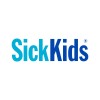
The Effect of Mandibular Advancement Devices on Markers of Cardiovascular Health in Obstructive...
Obstructive Sleep ApneaObstructive sleep apnea (OSA) is a type of disordered breathing defined by the repetitive obstruction of airflow during sleep due to upper airway collapse. Each obstructive event contributes to decreased blood oxygen, or hypoxia. OSA has been associated with various cardiovascular diseases, including hypertension, stroke, heart failure, and coronary artery disease. A factor in this association may be the decrease in blood vessel health and the marked over activation of the sympathetic nervous system that is observed in OSA due to nighttime hypoxia. The sympathetic nervous system is responsible for maintaining heart and blood vessel (cardiovascular) balance. Elevated sympathetic nervous activity (SNA) is a likely cause of hypertension and subsequent cardiovascular disease. Continuous positive airway pressure (CPAP) therapy is the most accepted treatment for OSA and has been shown to improve high blood pressure and SNA in patients. An alternative therapy for OSA is a type of removable oral appliance known as a mandibular advancement device (MAD). Currently, there is no research directly measuring SNA in OSA patients using MADs. In addition to other cardiovascular markers, the investigators would like to directly assess SNA during a MAD intervention using the gold standard technique of microneurography. The investigators believe this will provide important information for the management of OSA, as levels of SNA are known to respond to both acute and chronic levels of hypoxia. Improved heart and blood vessel markers could further support MAD use, providing an important alternative therapy for those that can not tolerate CPAP.

Prevalence and Impact of Obstructive Sleep Apnea in Multiple Sclerosis
Multiple SclerosisObstructive Sleep ApneaThis study will evaluate the influence of sleep apnea on clinical and radiological features of MS. Sleep apnea is associated with hypoxemia during sleep, which is likely detrimental to MS. Clinical data (MRI, lab results, medical history, labs, and sleep studies) of MS patients will be collected and analyzed. This will be done to study correlations between MRI, clinical data, lab studies and sleep studies. There is specific interest in the type of sleep apnea associated with MS, and whether MRI or clinical metrics of MS severity correlate with presence or absence of sleep apnea.

Sleep Apnea in Heart Failure With Preserved Ejection Fraction
Heart FailureObstructive Sleep ApneaThis is a prospective interventional study to better understand i) the prevalence of Obstructive Sleep Apnea (OSA) in Heart Failure with preserved Ejection Fraction (HFpEF), ii) its hemodynamic correlates, and iii) the impact of intervention with Continuous Positive Airway Pressure (CPAP) on quality of life.

Long Term Oral Appliance Therapy Effectiveness for Obstructive Sleep Apnea Syndrome
Obstructive Sleep ApneaObstructive sleep apnea (OSA) is a highly prevalent breathing problem that occurs during sleep. OSA have been associated with the obesity epidemic in developing countries; additionally, high OSA prevalence rates are present in populations with cardiovascular and metabolic disorders. Two OSA treatments are currently available, oral appliance (OA) therapy and continuous positive airway pressure (CPAP). OAs are an underutilized non-surgical treatment and few studies have analyzed their long-term effectiveness for patients with OSA. The purpose of this study is to assess the long-term effectiveness of OA therapy in patients with OSA and to explore any changes on cardiovascular related morbidity and mortality related to this therapy.

A Cross-sectional Study Examining Adipose Tissue in Obstructive Sleep Apnea
Obstructive Sleep Apnea of AdultStudies show that sleep apnea increases the risk of cardiovascular disease and is associated with obesity. However, it is unclear how sleep apnea affects fat tissue. Studies have shown that fat tissue is likely involved in developing cardiovascular disease. The purpose of this study is to see how sleep apnea changes fat tissue.

Reaching for Equity in Sleep Apnea Treatment (REST) Study
Sleep ApneaThis study will test a brief telephonic health coaching intervention to improve adherence to positive airway pressure therapy for treatment of obstructive sleep apnea.

Microparticles in Obstructive Sleep Apnea
Sleep ApneaObstructiveObstructive sleep apnea (OSA) is independently associated with cardiovascular diseases, including myocardial infarction and stroke. OSA may promote atherosclerosis risk factors such as hypertension, diabetes and dyslipidemia and may have direct proatherogenic effects on the vascular wall. A growing number of studies have recently focused on the role of microparticles (MPs) in the atherogenic process. Case-control studies have shown that platelet-, endothelial- and leukocyte-derived MP levels are increased in OSA and that leukocyte-derived MP are released during the night in OSA. Furthermore, experimental evidence shows that MPs from OSA patients induce endothelial dysfunction. The objective of this prospective study is to evaluate the impact of increased levels of leukocyte derived MPs on the cardiovascular outcomes in patients with prevalent cardiovascular diseases investigated for OSA.

The IPAd Study: Exploring the Association Between Insomnia and Positive Airway Pressure Adherence...
Obstructive Sleep ApneaHypoventilation1 moreSleep-disordered breathing (SDB) is prevalent in children and adolescents and untreated SDB impacts key indicators of physical and psychosocial health. Positive airway pressure (PAP) therapy is highly effective for the treatment of SDB and is associated with favorable clinical outcomes but is limited by poor adherence. Emerging literature in adults suggests that intolerance to PAP therapy may be related to coexisting insomnia. However, the presence of insomnia in children with known SDB as well as its impact on PAP adherence have not been explored. This proposal will explore the association of coexisting insomnia on PAP adherence in children with SDB using a cross-sectional study design. The investigators will assess the association between insomnia and PAP therapy adherence, measured as the mean minutes of nightly PAP usage over 6 months of use on objective downloads.

Impact of Breathing Route on CPAP Effectiveness to Treat Obstructive Sleep Apnea
OSAApnea+HypopneaTo determine the impact of the CPAP route (oronasal vs oral) in patients diagnosed with moderate-severe OSA using CPAP with oronasal mask on CPAP level, residual AHI, and peak flow. In addition, the impact of position (lateral vs supine position) will be evaluated during PSG.

Evaluation of An Optical Measurement Algorithm Combined With Patient and Provider Input to Reduce...
Sleep ApneaObstructive2 moreContinuous positive airway pressure and non-invasive ventilation are common treatment modalities for obstructive sleep apnea, central sleep apnea, and chronic alveolar hypoventilation from a variety of causes. Use of positive airway pressure (PAP) requires use of an interface, commonly referred to as a "mask." There are a range of mask options available, differing in configuration and sizing, including masks that fit into the nostrils (nasal pillows, NP), cover the nose (nasal masks, NM), cover both the nose and the mouth (oronasal masks, ONM), and rarely those that fit into the mouth (oral masks, OM) or over the entire face. The variety of masks, sizes, and materials result from the wide variety of facial configurations and patient preferences along with requirements to provide a good seal for varying pressure requirements. Failure to find a good match for a given patient may result in significant side effects, such as eye irritation owing to leak into the eyes, skin pressure sores, noise generation, and inadequate therapy when air leaks are extreme. Pressure sores, mask dislodgement, claustrophobic complaints, air leaks, and sore eyes occur in 20-50% of patients with OSA receiving PAP, and these effects negatively correlate with PAP compliance. Furthermore, several trials point to differences in compliance related to which types of masks are utilized. In a randomized cross-over trial, compliance was 1 hour more per night in patients using NM compared to those using ONM.1 In another, NPs were associated with fewer adverse effects and better subjective sleep quality than NMs.2 Therefore, failure to find an acceptable mask results in lower or non-compliance, and therefore treatment failure. Currently, finding a right mask is performed either using crude templates, or via an iterative process, variably guided by experts in mask fitting. There are no standard certifications or algorithms to guide mask fitting. Given the above, it would be very desirable to find a reliable method to reduce the errors in mask fitting so that the costs, inconvenience, and suffering are all reduced.
